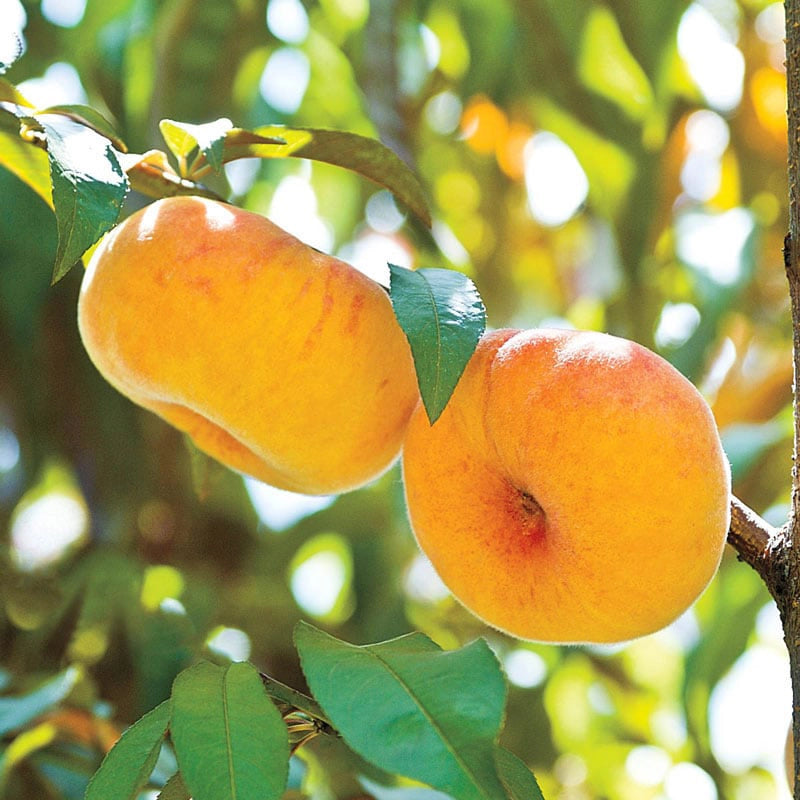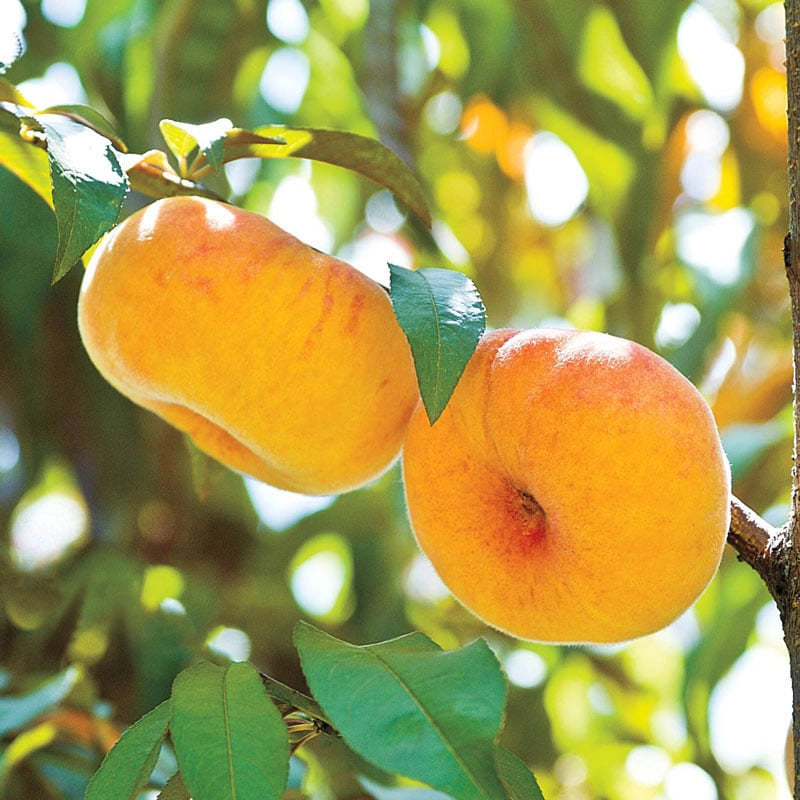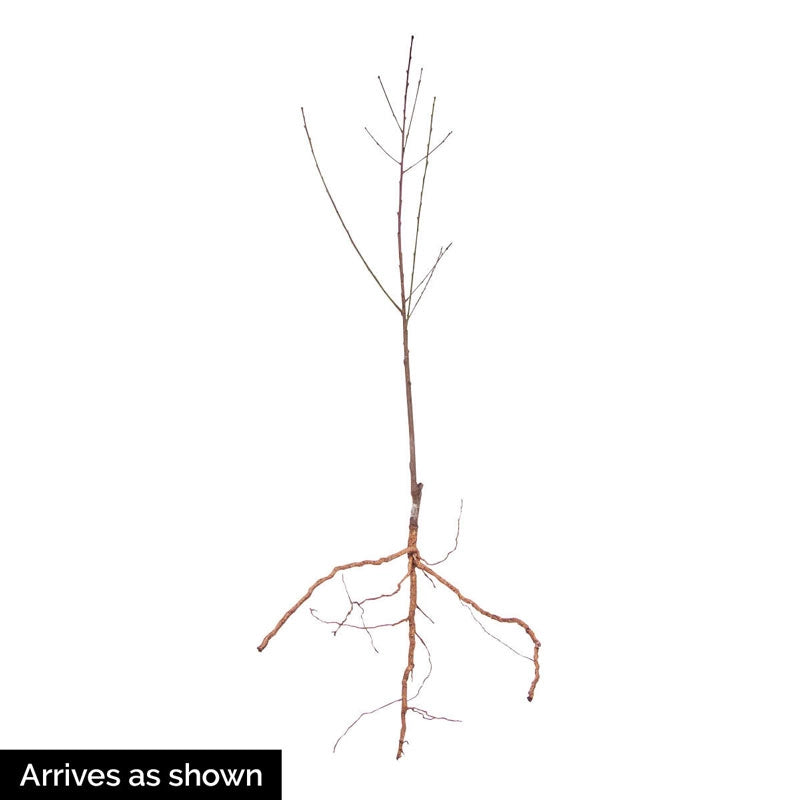1
/
of
3
Flat Wonderful™ Peach Tree
Peach trees with a sweet flavor that embodies summertime.
64110
- Regular price
-
1 for
$26.99 - Regular price
-
$29.99 - Sale price
-
1 for
$26.99

Couldn't load pickup availability
- flowering dateMid to late spring. Ripens in summer.
- hardiness zone5-8
- height15 - 20 feet
- restricted statesAE AK AL AR CA CO GU HI ID LA MS MT OR PR WA
- ship asDORMANT 1-2' BAREROOT
- sun exposureFull Sun
- Red foliage later in the year
- Great for baking, canning, fresh eating
- Sweet, rich flavor & unique flat shapr
Richly flavored, juicy, and with a dense texture, the Flat Wonderful™ Peach Tree grows peaches perfect for canning and baking, and fresh enough to eat right off the tree. Gorgeous showy blooms in the spring are followed by brilliant glossy red foliage giving your landscape a more ornamental appearance.
These fruit trees thrive in organic, well-drained, sandy soil 18-20 feet apart from each other. It's best to prune these peach trees in the late winter or early spring and water them a few times a week. The proper care for this flat peach tree will ensure your peaches taste flavorful and sweet.Prunus persica 'Flat Wonderful' PP16836
Product Details
- botanical namePrunus persica 'Flat Wonderful' PP16836
- flowering dateMid to late spring. Ripens in summer.
- flower colorPink
- flower formLight pink showy blossoms.
- foliage typeBrilliant maroon early, to green beginning in July.
- formEdible
- growth rateMedium growth rate.
- hardiness zone5-8
- height15 - 20 feet
- planting instructionsLocate the planting depth indicator, the marked line above the tree's root system. The graft should be about 2 inches above the soil surface.
- pruningPrune after most of freezing weather has past, but before tree leafs out - late winter to very early spring.
- restricted statesAE AK AL AR CA CO GU HI ID LA MS MT OR PR WA
- shipping seasonSpring
- ship asDORMANT 1-2' BAREROOT
- soil requirementWell-drained, organic, sandy loam soil.
- spacing18 - 20 feet
- spread18 - 20 feet
- sun exposureFull Sun
Shipping Schedule
When will my order ship?
Plants will be shipped at the proper planting time for your area of the country during the shipping timeframes outlined below:
| 2024 Spring Shipping Schedule | |
|---|---|
| Zone | Select Trees |
| 3A-4B | 3/25/24 - 6/7/24 |
| 5A | 3/11/24 -6/7/24 |
| 5B | 2/26/24 - 6/7/24 |
| 6A | 2/26/24 - 6/7/24 |
| 6B | 2/26/24 - 6/7/24 |
| 7A & 7B | 2/5/24 - 6/7/24 |
| 8A-8B | 2/5/24 - 5/10/24 |
| 9A - 10B | 2/5/24 - 5/10/24 |
| Last Order Date | Zones 3A - 7B: 6/3/24 Zones 8A - 10B: 5/6/24 |




Flat Wonderful™ Peach Tree
- Regular price
-
1 for
$26.99 - Regular price
-
$29.99 - Sale price
-
1 for
$26.99










